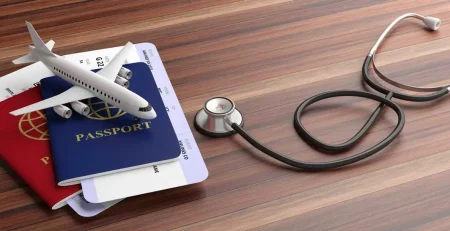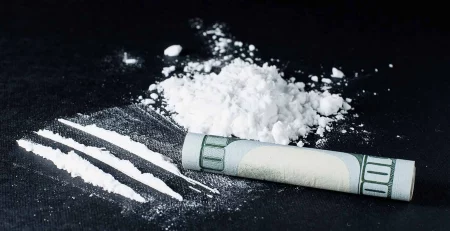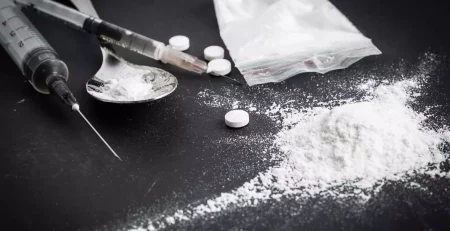How to Wean Off Alcohol
Guidance on Safely And Effectively Tapering Alcohol Consumption
Alcoholism isn’t easy to quit. If you have been consuming an inordinate amount of alcohol in a short duration of time, it is more than likely that you have developed physical and psychological dependence.
If you want to cut off your alcohol dependence, you may want to consider doing it the right way. “Quitting alcohol cold turkey” is a term that means quitting an addiction solely on your willpower, without any external help. It might help you overcome other kinds of addiction, but cutting off alcohol abruptly could result in dangerous withdrawal symptoms, for which you may need to seek medical attention. An alternative is to wean off alcohol by tapering the amount consumed daily.
Icarus Recovery Center in New Mexico offers comprehensive addiction treatment, from medical detox to outpatient care, to help you overcome alcohol dependence. Read on to find out how to wean off alcohol, while effectively managing alcohol withdrawal symptoms.
Alcohol Tapering

Alcohol tapering is a strategy commonly used to reduce or cut the amount of alcohol consumed. By gradually reducing your alcohol intake, you allow your body to adapt to a lower level of alcohol intake over time. In turn, the chances of alcohol withdrawal associated with quitting cold turkey are reduced. Your body will naturally go into a detox state until you stop drinking altogether. This is a safer and more effective means of cutting off alcohol consumption and treating alcohol use disorder.
Alcohol Dependence and the Body’s Response to Tapering
Consuming alcohol in high quantities results in physical and psychological dependence. Stopping alcohol consumption abruptly can lead to withdrawal symptoms like nausea, headaches, and sweating. Severe cases can cause seizures, tremors, and delirium.
Alcohol can easily enter the central nervous system due to its molecular size and ability to dissolve in fats. It may then bypass the protective barrier of the brain, which generally restricts the passage of many substances. Inside the CNS, it binds to the GABA receptors, which have an overall inhibitory effect. Alcohol reduces the sensitivity of GABA receptors, which has to be regained over time. When you suddenly quit drinking, during alcohol detox, the brain hasn’t regained the GABA sensitivity, which could result in physical withdrawal symptoms, including alcohol cravings. Tapering alcohol gradually helps regain the GABA sensitivity, which eliminates the risk of severe withdrawal symptoms.
Tapering off alcohol is the safest and most effective way to overcome alcohol abuse. Alcohol tapering has minimal withdrawal symptoms and helps you overcome addiction over time.
Get Effective Detox and Rehab Options at Icarus
Safe and Effective Alcohol Tapering Strategies
Here are some safe and effective tapering strategies for treating alcohol withdrawal syndrome:
Seeking Medical Advice
You could consider seeing a medical professional for advice on quitting alcohol safely. A medical physician will determine if you need to detox in a proper medical facility, or it could be done safely at home. Your medical records and past drinking history, along with guidelines from the Mental Health Services Administration, will help them choose the right path for you.
Even if the doctor or medical staff let you taper off at home, you should also consider taking proper guidance from them to achieve the best and safest results. The doctor would also prescribe supplements and provide counseling for effective alcohol tapering.
Know What You are Consuming

It is important to know the kind of beverage you are consuming, and its alcoholic content to manage the daily alcohol intake and narrow your alcohol consumption. For example, if you are consuming a 12-oz beer, you are consuming approximately 5% alcohol by volume in 1 drink. Similarly, 5 ounces of wine contains 12% alcohol per drink. And by liquor, which has the highest alcoholic content, you will consume more than 40% alcohol per 1.5-oz.
It’s important to know what you drink and how much you drink to lower your alcohol consumption in a calculated manner. Measure the exact amount of alcohol consumed with each drink daily, and then try to reduce it gradually.
Substitution Tapering
There are two kinds of alcohol tapering, direct and substitution tapering. Gradually decreasing the amount of alcohol consumed day by day is direct tapering. However, replacing alcohol use with other substances is called substitution tapering.
Substitution could be achieved with other beverages containing less alcoholic content, or with prescription medicines. These medicines are usually central nervous system depressants that substitute alcohol molecules at the GABA receptors. However, prescription drugs should not be used as an alcohol substitute, unless they are prescribed by a medical physician or by a medical doctor at a detox medical facility, particularly for tapering off alcohol.
Most common prescription medication for alcohol tapering and managing alcohol withdrawal symptoms include those that assist with alcohol cessation:
- Gabapentin, which reduces anxiety, insomnia, and withdrawal.
- Benzodiazepines, which prevent seizures and tremors.
- Thiamine, Vitamin B1, which prevents damage to GABA receptors in the absence of alcohol.
You can also substitute alcohol beverages with beverages and sodas that may taste like beer and wine and contain little to no alcohol.
Get Accredited Treatment Programs at Icarus – Call Now!
Track Your Alcohol Tapering
You may want to consider the fact that alcohol tapering isn’t a linear process. It takes time for your body to get used to it. That’s why you should create a tapering schedule that works for you. People have different alcohol tolerance limits and adjustment times vary from person to person. Tapering off alcohol gradually so your body doesn’t realize it’s getting less alcohol is the key.
For example, if you consume 8 drinks of an alcoholic beverage per day, try creating a schedule in which you consume 7 drinks a day. Then, after 5 to 6 days, start consuming 6 drinks a day instead of going cold turkey. Your alcohol consumption will be reduced, and you will not experience abrupt withdrawal symptoms.
As a rule, you should not reduce more than 25% to 30% of your alcohol intake within a 2 to 3 day period to avoid risks, as noted by the National Institute on Alcohol.
Stick to a Drinking Schedule
Another important tip on how to wean off alcohol safely is to stick to a drinking schedule. If you’re planning on drinking 4 times a day, try to schedule your drinks 6 hours apart. This will help maintain constant levels of alcohol in your body.
You should also have structure. Only drink at the same times each day: 9 am, 1 pm, and 6 pm. Avoid the temptation to take a sip in between and space them out. It requires consistency to adapt your body to require less alcohol. That’s why you won’t drink as needed, but will drink only on the drinking schedule.
Develop a Healthy Lifestyle

Redefining your daily routine to promote long-term healing is more important for successful alcohol tapering off than simply cutting back on alcohol consumption. Discipline becomes vital as you reduce your consumption.
Create a routine by waking up, eating, exercising, and going to bed at the same time every day. Healthy habits, such as writing, walking, or engaging in creative hobbies, may take the place of drinking cues.
Avoid people and locations that cause you to relapse and trigger substance abuse.
Make a Tapering Log
To stay on schedule and taper safely, one of the best strategies is to keep a thorough diary. Keep track of how many drinks you have each day, when you have them, any alcohol withdrawal symptoms you may have (such as sweating, nausea, or shaking), your mood, and any cravings in a journal, spreadsheet, or smartphone app.
If you’re working with a doctor or counselor, this record provides you with important information and helps you identify patterns, including when cravings are at their worst or symptoms worsen.
Maintaining a log helps you stay accountable and makes it possible to make safer, better-informed changes to your strategy.
Prevent Relapse Through Discipline
The fight doesn’t end after you have stopped drinking. In times of stress or emotion, your body and brain may still crave alcoholic drinks. That’s why having a good post-taper plan is essential.
Continue to create order, seek support groups, consider seeking treatment, and engage in activities that make your life worthwhile and fulfilling.
Relapse prevention is crucial at this point. Make sure your goals are clear, celebrate your accomplishments, and seek help from rehabilitation clinics or experts if necessary. Your lifestyle now serves as the foundation of your
Get professional help
Safe alcohol tapering requires preparation, assistance, and lifestyle adjustments. With commitment, medical supervision, and discipline, you can manage withdrawal, overcome alcohol addiction, reduce risks, and create a solid foundation for long-term recovery.
Get Expert Help with Alcohol Tapering at Icarus Recovery Center in New Mexico

It can be difficult to taper off alcohol, but you don’t have to do it alone. From medical detox to a comprehensive range of outpatient therapies, Icarus Recovery Center in New Mexico, a JCAHO-accredited addiction and mental health treatment center, offers professional assistance at every step. Icarus offers compassionate, scientifically supported treatments that are tailored to meet your recovery needs, whether you require round-the-clock care or adaptive therapy while residing in your own home. Their competent employees can guide you safely through the complex process of tapering.
Asking for help is the best course of action for long-lasting growth and not a sign of weakness. So book your appointment today!
Up To 100% of Rehab Costs Covered By Insurance – Call Now!
FAQS:
What is the timeline for alcohol withdrawal?
Mild symptoms can begin 6–12 hours after your last drink, peak at 24–72 hours, and usually resolve within 5–7 days.
What is the most successful way to stop drinking alcohol?
The most effective method combines medical support, behavioral therapy, and long-term relapse prevention strategies.
What is the 20-minute rule for alcohol?
The 20-minute rule involves waiting 20 minutes before deciding to have a drink to reduce impulsive drinking and cravings.
How long does it take for your body to detox from alcohol?
Alcohol typically clears your system in 72–120 hours, but full detox, including withdrawal resolution, can take up to a week.
How to flush alcohol out of your system?
You can’t speed up liver metabolism, but staying hydrated, eating well, resting, and avoiding more alcohol can support your body while it naturally clears alcohol over time.













